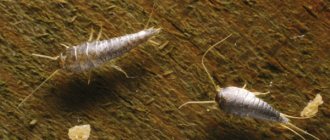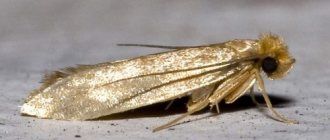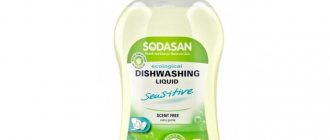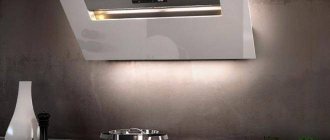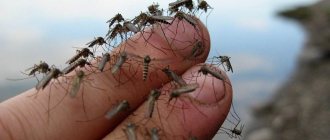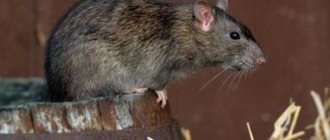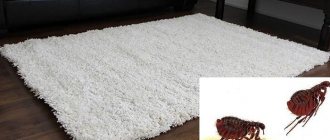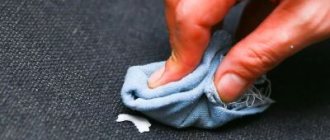One of the main dangers is that termites can be very secretive enemies. Traces of their vital activity may not even be observed. They can bite into your house, for example, from under the foundation and devastate all the insides of the wooden floors of the house. The worst thing is that it will take them 2-3 years for your fortress to collapse – in the literal sense of the word.
This guide will be useful not only to those who have already been in trouble, but also to those who want to protect themselves and their home from the appearance of these disgusting insects. Today we will find out: who are termites, what do they do and why do they need to destroy our settlements? We will also consider the most effective methods of pest control, means of prevention and the opinion of respected experts on this matter.
Who are termites and why are they dangerous?
Small insects, vaguely reminiscent of ants, with white bodies and wings. In the process of evolution, they evolved from cockroaches, and ants are precisely their enemies. They have a clearly defined hierarchy for such insects. Having seen them once in person or at least in pictures on the Internet, you are unlikely to confuse them with someone else.
Why do termites destroy houses?
Termite food is cellulose. The main storage of this material, as we know, is wood, and only then all its derivatives: paper, cardboard, etc. In the context of nature, termites cannot even be called pests, since they only feed on dead wood. In extremely rare cases they can be found in a living tree. But since houses are built from recycled wood, this is an excellent treat for these insects. And the fact that they are not interested in the tree itself, but only in the cellulose, is evidenced by the dust left at the crime scene.
Which termites are dangerous?
There are 2 main types of termites: subterranean and arboreal. The former live both in the ground and in wood, the latter, respectively, only in structures made of wood. Underground individuals also live in various sheds, garden houses, and dung heaps. They also cause much more damage to your property. If you were able to determine that it was these termites that attacked you, it will not be easy at all; most likely, you will need to turn to professionals.
How can you tell if your home is infested with termites?
If you have any of these signs, start taking action immediately or contact a specialist:
- Small round holes - termites gnaw holes and gnaw out tunnels, which they both feed on and make their way through
- Tunnels - if you find cracks or damaged areas, then try to “pick them apart” even wider and see if this is just damage or a trace of termite.
- Trash - small piles of trash next to the holes described above. Another sure sign.
- Waste - if termites hide their existence well, then they simply get rid of excrement. You can use them to track insects.
How to Get Rid of Termites Naturally
To begin with, you can try to move the infected wood from the site. This is a humane method, meaning that termites that are harmful to human farming can be moved to where they will be useful as participants in soil metabolism.
Small pieces of wood that contain live termites can be soaked in soapy water to kill the insects. Large pieces can be taken to a landfill or to nature, where the termites' abilities will be beneficial, say scientists from the University of Washington.
Nitrogen and electric current . If termites are found in dry wood, they can be eliminated using liquid nitrogen. To do this, small holes are drilled in the affected wood into which nitrogen is injected. Another option for physical impact is electricity. Using a special gun, The Electrogun™, a high-voltage, low-current electric charge is directed at insects inside dry wood. It is used for limited infections. Microwave radiation is also used for this purpose.
Cardboard traps . A cardboard trap, which you can create yourself, will have a limited effect by moistening two sheets of cardboard placed on top of each other. When they are filled with insects, the cardboard can be destroyed using available methods. But it is important to understand that this method will not solve the problem of the appearance of new individuals. Pest control manufacturers also produce sticky cardboard traps. One of these traps is presented in the selection of tools below.
Sun or frost - these measures are quite complex and can be suitable for furniture and other small objects. Place infested wood in the sun to warm up. But scientists from the University of California Agriculture and Natural Resources warn that “the treatment process involves heating all the wood in the structure to nearly 50 degrees and holding that temperature for more than half an hour.” Can you provide these conditions? Freezing is even more difficult. Place the furniture in a huge freezer if you have one, or take it out into the cold if it happens in your area. The termites will die within 1-2 days.
Don't worry if the problem cannot be solved with improvised means. Less than 4% of such attempts lead to success. It is recommended to combine these measures with those below, and as a result their combined effectiveness will increase dramatically.
Description of appearance
Different varieties of termites have some differences related to:
- With body coloring.
- Covering the body with a chitinous shell.
- With the presence of the thoracic region, although underdeveloped.
- With a large head, armed with a powerful mouthparts.
Depending on the species, as well as social status, insects grow in length from 2 to 15 mm. Workers and soldiers do not have eyes at all, or they do have them, but they are underdeveloped. On the head you can see thin antennae, as if connected by numerous segments. Their length depends on the age of the insect, so their age is easily recognized.
The size of insects also depends on the purpose of the individuals. Working individuals are not large in size, but soldiers can be up to 2 centimeters long. At the same time, they have a fairly large head and very powerful mandibles. Because of this, they cannot feed on their own and are fed by workers. Some species are distinguished by the fact that they have a special growth formed on their head. This growth serves so that soldiers can shoot a special repellent liquid at their enemies.
Winged termites are armed with two pairs of compound eyes and two simple eyes. After the individuals find suitable habitats for themselves, they break off their wings along a certain seam. Although their wings are large, they are weak and not intended for long flights, although in the presence of wind they can be carried quite far. That's why they don't fly as well as they plan. Winged individuals are endowed with the properties of reproduction, which is not given to workers and soldiers, since they do not have gonads.
The king, and especially the queen, of termites are distinguished by their size, which is typical for more “advanced” species, in which working individuals are 10 times smaller than the queen. In appearance, the queen of termites resembles the queen of ants. The queen is constantly engaged in mating with the king and laying eggs. As a result of this, her abdomen stretches so much that she stops moving independently. If necessary, it is simply transferred to neighboring chambers by working termites.
In more primitive species, the queen, although different in size, is not significant. The termite queen can live at least 10 years thanks to special enzymes that have an antioxidant effect.
The king of termites is the same in size as the working individuals. At the same time, the king is always next to the queen. Its main task is the timely fertilization of the female.
Representatives of some families have special outgrowths on the head, in the frontal part, on which anxiety pheromones are released, which are captured by the rest of the family members.
Each species has its own ratio of workers to soldiers. As a rule, the number of soldiers is no more than 3 percent, although there are varieties of termites that do not have soldiers at all or their number is about 15 percent or slightly less. Thanks to Japanese scientists, it was established that X chromosomes are responsible for the sexual dimorphism of such social insects. Thanks to the presence of this gene, either female or male individuals appear, as well as workers or soldiers. This feature is typical for more “advanced” species. As for less “advanced” species, the social status of their larvae depends on special ferromones, as well as on the nature of their diet.
Termites, like any type of insect, have 3 pairs of limbs. The color of species varies even within the same termite mound. Therefore, inside the termite mound, in its complex passages, you can find insects with both dark and light body coloring.
Termites. Film fragment. HD 1080p
Watch this video on YouTube
Organic Termite Killers
Dust and powder . Another method is to dry out insects using special dust, such as diatomaceous earth or silica airgel. They cut into the chitinous cover of insects and penetrate inside, drawing fluid from the body. The dust is harmless to humans as long as it is not inhaled. To avoid irritation of mucous membranes, use a mask and safety glasses. However, scientists have differing opinions about the effectiveness of diatomaceous earth. Some consider it effective, others do not. Most likely, the answer lies in one of its features: diatomaceous earth loses its effectiveness even with low humidity. Therefore, it can only be used for termites in dry wood.
Natural enemies . Sometimes it is not necessary to deal with termites yourself. You can break into the passages made from the colony to the feeding areas, after which natural enemies of termites, for example, ants, can get into them.
Another enemy is Nematodes. The idea is to attack the enemy with his own weapon. Nematodes parasitize insects. They must penetrate the host's body and therefore destroy it. A termite lives 48 hours after infection. The disadvantage is that the nematodes themselves soon die. These worms can be purchased on Amazon.com. Scanmask 10 Million Live Beneficial Nematodes: ~$12.99.
Boric acid . Finally, a proven remedy against many types of insect pests is boric acid. A simple and affordable product, widely used in different forms: as a powder or component in baits. This is a slow-acting substance. After eating boric acid, the insect will gradually experience paralysis and die. PestGuard Boric Acid : ~$6.99.
Other tips
You can find various tips on the Internet on how to get rid of termites. However, some of them are ineffective, want to know why?
For example, spraying wood with gasoline does not work. It does not penetrate into the wood where insects live and feed. In addition, gasoline is very flammable and smells unpleasant.
You may also have come across advice on using kerosene, motor oil and other similar products. They are not only toxic to the human body, but also flammable.
How do termite killers work?
| Product type | Ingredient | Principle of operation | When and for what is it better to use | How effective is it? |
| Liquid insecticide | Fipronil | Slow poison, causes paralysis when eating treated wood | For pestilence and creating a barrier around the house | Effective, but will take time to kill a colony |
| Granules | Imida chloride | Kills after eating | Scatter as a barrier | Effective against insects on the street - a protective barrier against pests entering the house |
| Foam | Fipronil | Slow-acting poison that causes paralysis | Foam passages and galleries | Dense foam will not give you a chance to get out - it will kill you within a few days |
| Powder | Diatomaceous earth or silica airgel | Kills by dehydration | Sprinkle in areas where termites accumulate | Only for termites in dry wood |
| Boric acid | Boric acid | Causes paralysis after eating. | Fall asleep in passages and galleries | Effective, but since the substance acts slowly, it will take time to exterminate the entire colony |
| Cardboard traps | Cardboard, water, glue, bait | Detains insects | Where they appear near a food source | Will only catch termites on the surface |
| Nematodes | Killer roundworms | They parasitize termites and eat them. | Inject into the affected tree or into the soil near the colony | 50-99%, depends on whether the nematodes have time to infect the termites |
| Lures | Hexaflumuron or diflubenzuron - slow-acting components | Sterilize the queens - the colony will die out | For outdoor use only | Very effective, but will take the most time |
What's the harm?
Insects feed on cellulose contained in cardboard, paper and wood. Termites eat only dead wood and only in extreme cases, when they get carried away, destroy a living tree. It is known that houses are built from recycled dead wood, and pests simply lose their minds from such an amount of food. However, insects only eat cellulose, as evidenced by the dust left at the crime scene.
There are arboreal and subterranean dangerous types of termites. The underground ones build their homes under the sheds in the form of a large hill. They cause significant damage to property in the country. These specimens also live in manure heaps and other similar places. Wood insects chew through a network of tunnels in the house. They violate the integrity of the structure and reduce its service life. It is easy to detect the presence of white ants - they leave holes in the beams.
If the deplorable situation is not corrected, the house will be severely damaged. Almost all the wooden elements of the country house will have to be replaced. If you have discovered the presence of white ants, take urgent measures to destroy them.
Top 7 termite remedies
Termidor SC Termiticide
The product, which has very high reviews from customers on Amazon, costs $77.70 for 0.6 liters of liquid. It contains fipronil, which kills termites slowly and therefore quickly spreads among the inhabitants of the colony. Mix it with water according to the instructions and fill a 15cm ditch around the foundation of the house. Once in the soil, the product should form a long-term barrier against insect pests.
Bayer Diy Termite Killer
Imidachloride granules are also quite popular among consumers and are easier to use than liquid insecticides. They are placed around wooden structures that are of interest to termites and just wait. 4 kg of granules cost $44.97 and are enough for 60 meters of poured strip.
Termidor Foam
Another Thermidor, this time in the form of a foam with fipronil, a slow-acting poison. The product costs $24.95. The foam is contained in a container under pressure and is convenient to use in addition to the classic insecticide. Using a long nozzle, foam is pumped into cavities and hard-to-reach places where the nest is located. 80% of buyers did not give this product the highest rating.
TERRO 16 oz. Carpenter Ant & Termite Killer Aerosol Spray
This spray with a nozzle for hard to reach areas is different from other products because it kills termites quickly and is suitable for quick protection of individual properties, but not for long-term control of a large colony. The product creates a barrier against insect attacks for up to four weeks. 450 grams of spray costs $6.05. Contains permethrin and tetramethrin.
36 Catchmaster
36 cardboard traps that can be rolled up or used as flats cost $14.99. They will not rid the house of new termite infestations, but can be used as local protection for individual items. Typically, the trap is capable of holding not only insects, but also mice, lizards and even snakes.
Comparison of traps used by professionals and households
Let's compare two products: the first is Spectracide for homeowners and the second is Advance professional.
Spectracide Terminate Termite Detection & Killing Stakes
Five stations with baits for the local area with hexaflumuron (a slow-acting insect growth regulator) cost $16.31. They are installed on the ground with submersion and attract termites. This device has two directions of action: detection and killing. Dig a small hole, place the station in the soil and wait. Once the device detects termites, an alarm will appear indicating their presence. Suitable for outdoor use only. Placing 15 bets will protect up to 230-280 square meters. The trap will last up to 12 months before needing to be replaced.
| Product | Active substance | Peculiarities | Price |
| TERRO 16 oz. Carpenter Ant & Termite Killer Aerosol Spray | Tetramethrin, permethrin | Aerosol | ~$6.05 |
| Bayer Diy Termite Killer | Imida chloride | Granules | ~$44.97 |
| Termidor | Fipronil | A powerful insecticide that can only be used twice a year | ~$77.70 |
| Termidor Foam | Fipronil | Foam, suitable for hard to reach areas | ~$24.95 |
| 36 Catchmaster | Sticky base | Cardboard trap, insects stick to it | ~$14.99 |
| Spectracide Terminate Termite Detection & Killing Stakes | Hexaflumuron | Kills termites and signals their appearance | ~$16.31 |
In what parts of the world do termites live and in what climate?
Termites can be found in almost every corner of our Earth, except, of course, Antarctica. A small number of these insects live in Europe (about ten species) and North America (fifty species). A large number of termites live in South America. There are more than four hundred species there. However, the largest number of species of these insects is distributed in Africa. This continent is home to 1,000 of the 3,000 possible species of termites.
For example, in the northern Kruger National Park there are one million termite houses. Only 435 species of termites live in the Asian part of the world. These insects are more common in China. But in Australia there are 360 studied species of termites.
According to biologists, termites cannot live in cold climates due to their delicate cuticle. In general, there are three subspecies of these insects on the planet: wet-wood, dry-wood and underground. The wet-wood species inhabits coniferous forests, the dry-wood species lives in deciduous forests, but the underground species is common in all climatic zones and territories.
In the Russian Federation, termites can be found in Vladivostok and Sochi. There are about seven species of termites in the CIS.
We turn to specialists
The effectiveness of the remedies that I have offered you is high and time-tested. But they will not always be able to help you. You may not have enough experience, and you do not use the drugs correctly, do not completely cover the area, make other mistakes, or something simply does not work out. In this case, you should not hesitate - you need to contact an exterminator. His help will cost a lot of money, but:
- The exterminator must provide a guarantee for his work.
- He is an expert in his field
- They use substances to fight that are not freely available.
Do not forget that scammers are everywhere, and, in addition to wasted money, you may lose your home due to poor quality processing or harmful, potent poisons. Explore several offers on the pest control services market. Try to find out as much as possible about the company you like. If there are no reviews on their site or, better yet, only positive comments, be careful, it looks like a scam. A guarantee for the quality and durability of the work performed must be issued in writing, and repeat inspections and visits to maintain the quality of the work performed must be carried out free of charge.
Preventive measures: what to do if there are no termites yet?
If you have not yet encountered termites in your yard or have already successfully defeated them, then, of course, you need to take preventive measures. Here are the precautions experts recommend:
- Once construction is complete, keep the soil around the foundation dry.
- Reduce openings that termites can exploit (fill cracks in cement base, etc.).
- Keep vents clear of blockages, including plants.
- Make sure that trees and shrubs are not planted too close to the walls of the house, and do not allow them to push through wooden surfaces.
- Do not place firewood or wood debris near your home.
- Periodically inspect firewood storage areas to make sure that termites have not taken up residence there.
One of the best means of prevention is Rust-Oleum 01901 Coppercoat Wood Preservative. The drug has been certified and is safe for people. It is best to use this repeller during the construction stage, but if you missed this point, it’s okay. Take a brush and apply the liquid to all wooden structures: coat generously and let dry. Please note that the product is recommended for outdoor use - you work with it indoors at your own peril and risk.
Let's summarize!
Termite control requires a responsible approach. Firstly, there is no other way to defeat them, and secondly, your home is probably one of your greatest material assets and losing it due to insects is not acceptable. Use different means, combine and you are sure to win.
Gasification with smoke bombs
You cannot fumigate a home that contains food that will later be consumed by household members - this is strictly prohibited. Carbonation rules:
- Remove food from the premises and remove people.
- Cover all cracks in the house with alabaster or seal with adhesive tapes. Ventilation ducts and vents should be sealed.
- Fumigate the home with non-flammable smoke bombs and spray the wooden elements with chlorophos or chloropicrin.
- After fumigation, leave the house for a week. During this period, carbonation will occur.
- After treatment, ventilate the home until the specific gas disappears completely. If not all the cracks in the house are covered, then seal them with alabaster.
Toxic fumigation is dangerous for people. If insects have crawled deep into thick logs, they may not be affected by the gas. And the remaining pests will multiply and begin to destroy the house again.
A vacuum chamber will help completely exterminate white ants. However, it is suitable for antique expensive furniture. It is not practical to fumigate regular wood beams with chemicals in a chamber because it is expensive.
About nests
The nests of these insects have different structures, locations and sizes. They can be located underground and communicate with each other thanks to many tunnels, reminiscent of huge galleries. Sometimes termite mounds rise in the form of gloomy pillar-like structures on the surface of the earth.
In the north of Australia, termites have built nests that look like gravestones, rising 3 m above the ground. It is noteworthy that many of these termite mounds are built according to the same principle: their narrower edges are directed strictly to the south and north. This is how termites carry out climate control inside the home, as if taking into account the daytime heat and nighttime coolness of those places.
The nest is built by workers from a clay-like mass obtained by mixing their own excrement and saliva with soil and wood. The walls of such a termite mound are quite dense, and in order to destroy it, the enemy will need some effort. The size of the nest directly depends on how numerous the colony currently lives in it.
Inside any type of nest, countless chambers are built for storing food supplies and the development and growth of offspring. The most reliable chamber was rightfully given to the royal couple, who were responsible for adding to the family.
The structure of a termite mound
The termite mound consists of an above-ground part (which is a large elevation) and an underground part, consisting of a network of numerous intricate tunnels and rooms. The material for construction is a composition of excrement of working termites, their saliva, crushed wood, dry blades of grass and clay. Structures built from such a mixture are characterized by high strength and waterproof walls. The color of the termite mound often matches the color of the soil and is not noticeable to predators, blending in with the environment. In the above-ground part of the structure there are most often chambers with larvae, eggs, “mushroom gardens” and a huge network of ventilation tunnels. There you can also see small farms with thermophiles - animals that secrete special substances that are happily licked off by termites. Thus, a symbiosis occurs between them, in which the other side - thermophiles (a striking example is the termitoxenia fly) - receives a rich source of food and a favorable microclimate.
Dream Interpretation - House
If in a dream you could not find your home, then you will completely lose faith in the honesty of people. If in a dream you realized that you don’t have a home, get ready for failures and financial losses. If you found yourself in your old house in a dream, expect good news. If you saw your old home cozy and joyful, long prosperity awaits you. Moving is a dream of urgent news and hasty trips. An abandoned house foreshadows sad events. According to D. Loff, different things can happen to a house in a dream. You can build or buy it, or you can see how it is destroyed by the elements or war. The house can be overrun by terrorists or robbers - in short, anything can happen to the house. As a rule, a house is dreamed of serious changes, instability, but sometimes – great growth. A house occupied by someone indicates your unstable relationship with the outside world. You are clearly depressed. Moreover, if you are in this state constantly, then you may well see your house inhabited by some people or animals. Such a dream is a sign of anxiety. You dream of a destroyed house when moving or having financial troubles. He may dream of a serious illness or divorce. In such dreams, the house falls apart and you are left homeless. Dreaming of building a house means change. Perhaps you are about to get a promotion or an improvement in your financial situation, which will open up additional opportunities. A qualitative transition to a more serious level in a relationship with a loved one is not excluded. Perhaps you will get married soon. Or maybe you are ripe to have offspring? Then it's time to build a cozy nest. In any case, dreams about building a house always have a positive connotation.
Basic information about horseflies
Horseflies are a type of midge (two-winged blood-sucking insects).
In total, there are about 4,000 species of such animals, 200 of which live in our area. The favorite habitats of horseflies are areas with abundant vegetation (forests, gardens, groves, crops in fields). But pests also thrive in urban environments. Compared to ordinary mosquitoes, horseflies are quite large blood-sucking insects. It is slightly larger than a regular fly. Horseflies have several stages of development. An interesting fact is that only female insects suck blood. Males feed on vegetation. At one time, the female sucks several times more blood than a mosquito.
You can distinguish a female by her appearance. Its body is almost 2 times larger in size than that of the male, its eyes are bulging, round, iridescent in multicolor. There is a bridge between the eyes.
Females feed on the blood of animals and humans. Without this food they will not be able to lay offspring.
The insect becomes active in the warm season. The largest number of parasitic flies is found in June-July. Horseflies love sunny, windless weather. You can't see them in rain or hurricanes. Parasites look for their victims based on two main signs - moisture and the smell of sweat. Insects have very developed jaws located in the proboscis. They use them to gnaw through the skin of a person or animal to extract blood. It is surprising that they sense the proximity of blood vessels. And they sting most often in those places where the skin is thinner and the capillaries are close to the surface.
There are cases where the parasite has bitten the eye (eyelid), head, or lip.
The area after a horsefly bite is always red. The bite itself is also sensitive. Only a sleeping person can miss it
Sometimes people mistake horseflies for ordinary flies and do not pay attention. In a short time, the parasite manages to choose a victim and tries to sting as quickly as possible
Lifestyle, nutrition
It can be quite difficult to see termites, since they do not like to crawl out into the light and are predominantly nocturnal. Their movement occurs mainly in the passages they make underground or inside a tree. These numerous tunnels are a kind of connection between the chambers of one nest or several neighboring termite mounds. Thanks to such secrecy, it is too late to notice the damage caused by termites, when a wooden building becomes unusable due to the many holes and passages made by termites inside it.
The main diet of termites is cellulose in any form and, in general, anything made from wood. They eat dry dust, plants with tree-like stems, cardboard, and paper. Even linen, wool and cotton fabrics, leather goods and felt can serve as an additional source of nutrition. But termites do not eat these materials so readily.
In nature, termites eat rotten stumps and trees (termites do not threaten living trees), dry stems of cereals, dead branches and fallen leaves. The intestines of these insects contain cellulose-degrading bacteria that break down wood and convert it into acetate. Further digestion is carried out by other protozoa, which also live in the intestines of termites. The resulting acetate and nitrogen are released by insects along with excrement and serve as fertilizer for forest soils.
The photo shows a dry tree eaten away by insects.
In winter, termites lose activity, but having taken root in heated wooden houses, they continue their activity all year round.
The size of a termite family can range from several tens to millions of individuals, and each of them has its own “job.”
Workers are responsible for feeding and caring for the offspring and the king and queen, storing food, developing the young, building and repairing the nest. They also feed the soldiers, whose huge jaws do not allow them to eat on their own, so the defenders feed only with the help of “servants.” In a word, working termites are a kind of “service department” that provides various services to the rest of the family members.
Soldiers are the defense of the colony. They protect the family from ants and other enemies, using their powerful mandibles or horn with poison. The action of the splashed poison, which dries in the air, has a paralytic effect, temporarily immobilizing the enemy’s ability to move. In the event of partial destruction of the nest by the enemy, the soldiers, with their large heads, plug the gaps in the narrow passages and remain in this position while the workers seal the hole. Often the soldiers themselves find themselves “walled up” and can no longer get out of the trap in which they find themselves while defending their nest.
Soldiers, in turn, also have their own “units”. Large individuals protect the nest (they are the ones who cover up damage to the nest with their heads), medium ones serve as a kind of rear for them, and small ones act as “controllers,” monitoring the workers, urging them on and punishing them if necessary. Among the termites there are soldiers and security and signaling services. Numerous guards vigilantly monitor whether the nest is in danger, and if an enemy appears, they give a signal to the “signalmen,” who, in turn, notify the main army about the threat. And then the termite fighters come out in orderly ranks to defend their home and their family.
